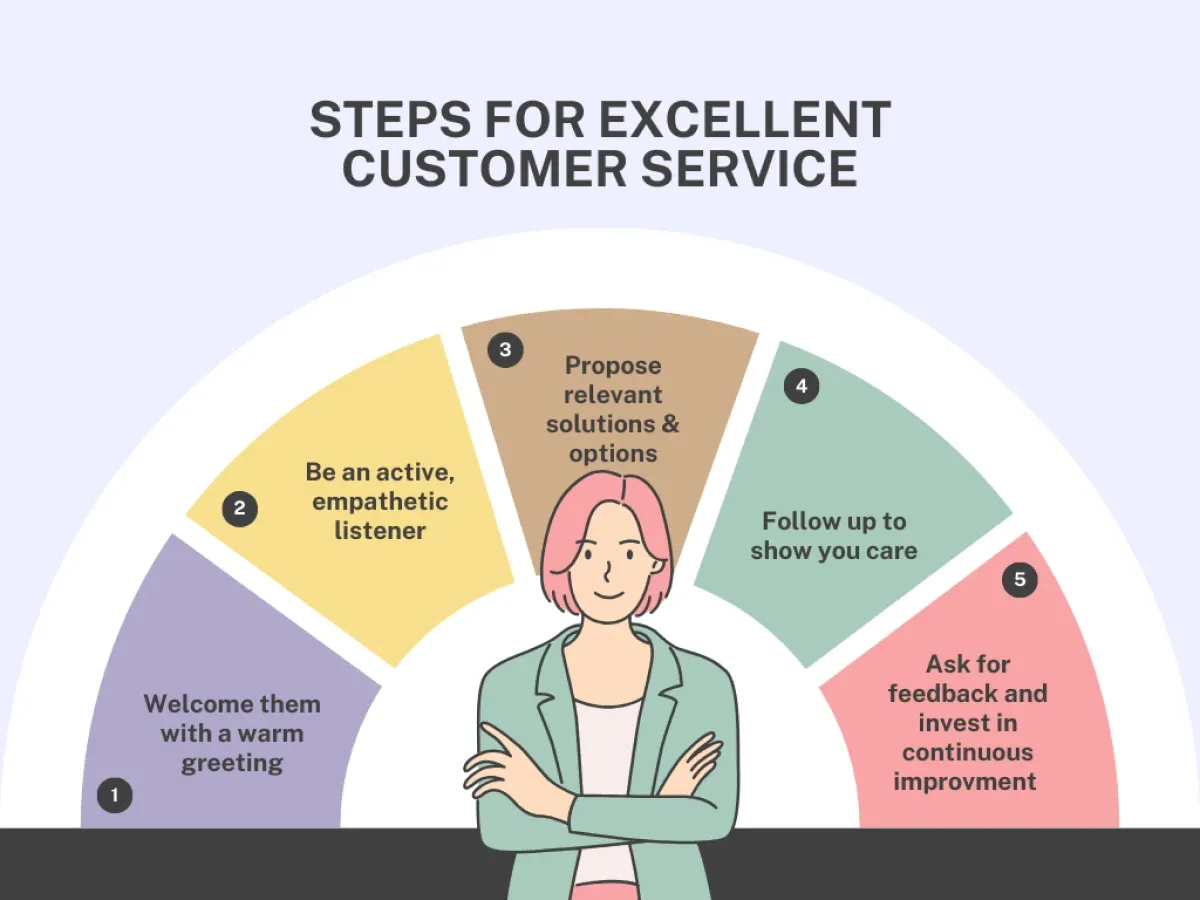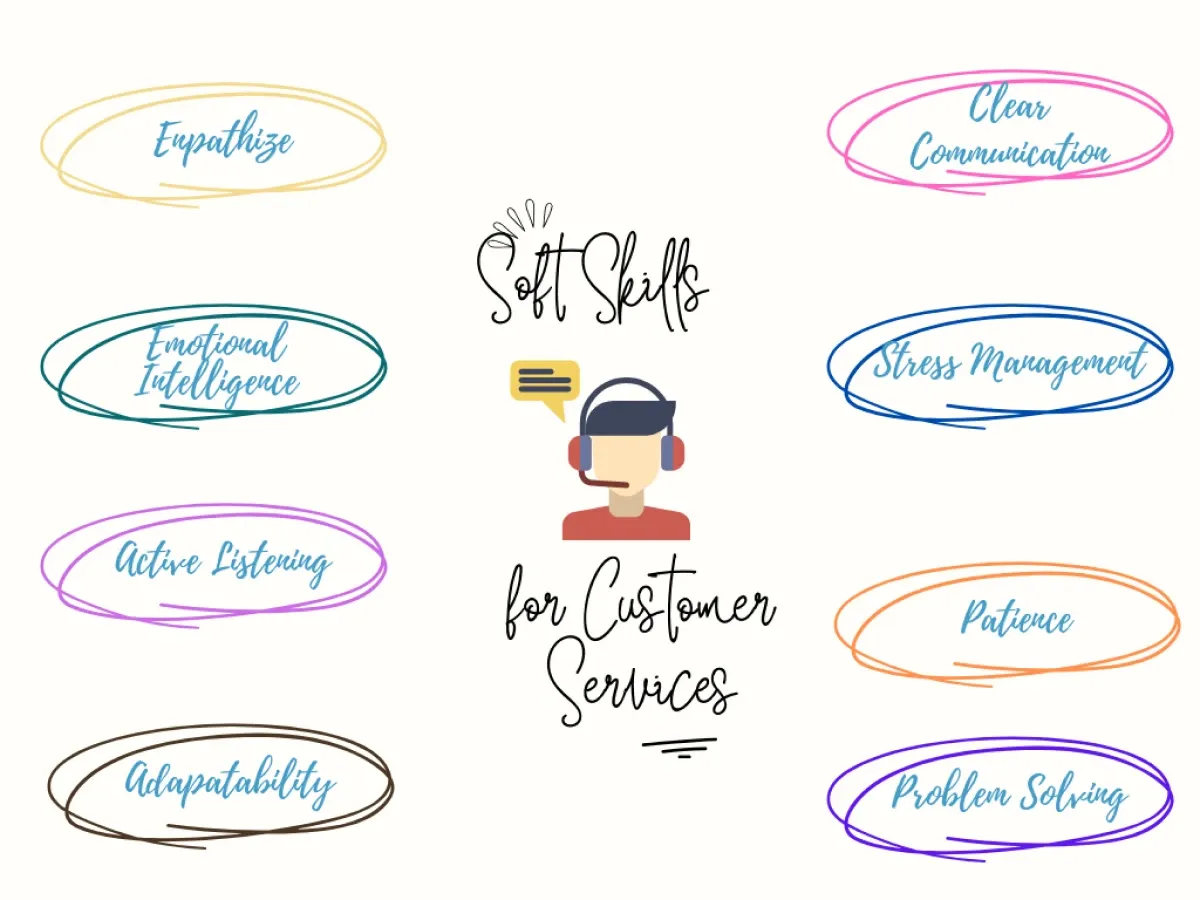5 steps to excellent customer service – how to keep your customers smiling forever
Learn the 5 essential steps to providing excellent customer service, from warm greetings to recommending relevant solutions. Discover how active listening, empathy, and timely follow-up can keep your customers smiling and coming back for more.

Winning a new customer is no mean feat. It requires hours of research on a prospect’s needs, meticulously crafted elevator pitches, and potentially thousands spent on marketing campaigns and sales events. Months of effort go into securing that initial deal, and even more to see a return on investment.
For B2B SaaS companies, this cycle is an ongoing, never-ending reality.
Imagine the frustration of losing a customer after all that effort. This is precisely why leading companies prioritize building strong customer service teams and processes.
Statistics reveal the stark impact of service quality – a single bad experience can lead to 51% of B2B companies severing ties with their vendor. On the flip side, excellent customer service brings about loyalty. 78% of consumers are more likely to do business with a company again, even after a mistake, if they receive exceptional service.
How you end up designing your customer service process depends on your specific context. Factors like your customers' needs, your company's stage of development, and how you structure your teams all influence the most effective service model.
However, certain core principles (five to be exact) remain constant, regardless of other variables. Let’s dive into what they are and how you can put them to use.

1. Make a lasting first impression (every single time)
Every time a customer comes to you, either with a simple inquiry or a more serious issue, how you behave with them will leave a strong and lasting impression. Here’s how you can set the tone for a successful interaction –
- Start with a friendly greeting, regardless of the communication channel. A simple "Hello, how can I help you?" or "Thank you for contacting us!" demonstrates professionalism while creating a welcoming environment.
- When possible, personalize greetings by using the customer's name. This adds a human touch and shows you value their interaction.
- Smile, even if you’re over the phone. A genuine smile, even during phone interactions, can help take the edge off a customer. It gets conveyed through the tone of your voice and makes the customer feel more welcome.
- Aim for a quick (albeit relevant) response, especially for initial inquiries. This shows the customer you value their time and are eager to assist them.
2. Be an active listener
You cannot begin to understand your customers unless you are actively listening to them. This way you avoid jumping to conclusions or giving out generic solutions. Active listening goes beyond simply hearing the customer's words. It’s about actively engaging with them.

- Give customers your undivided attention. Minimize any distractions in your environment and focus solely on the customer during the interaction.
- Pay attention to nonverbal cues. If you’re interacting with the customer in person, observe body language, facial expressions, and tone of voice to understand the emotional context.
- Subtly adapt your communication style to match the customer’s. That is not to say that if the customer is angry you get angry too. Instead, de-escalate the situation using a calm and empathetic tone.
- Don't hesitate to ask open-ended, clarifying questions to gain a deeper understanding of the issue.
- Periodically summarize what you've heard to ensure you're on the same page as the customer. Rephrasing key points will show the customer that you are paying attention and you understand what their problem is.
3. Present customers with solution(s)
Once you've actively listened to the customer and grasped their problem or needs, it's time to move towards a resolution. Here are some strategies for offering effective solutions –
- Focus on root causes. Don't just address the immediate problem – that may help you close a support ticket but it won’t prevent future occurrences.
- Present options, not dictates. Whenever possible, present a variety of options to the customer. This puts the power in their hands to choose the solution that best suits their situation. It’s just another way of personalizing the customer experience.
- Clearly explain the benefits of each solution and outline the associated next steps for implementation. If there are limitations or drawbacks with any of the options don’t hold back. Be transparent about it as this will help your customers make a more informed decision. They’ll trust and appreciate you more for it.
- Seek customer input. Encourage the customer to ask questions and provide feedback on the proposed solutions. Collaborative problem-solving can result in a more satisfactory outcome.
4. Follow-up!
Simply resolving an issue does not mean it’s the end of the road. Following up demonstrates your commitment to customer satisfaction and is an opportunity to confirm that the solution was effective.
- Tailor your follow-up method to the situation. Complex issues might warrant a phone call, while a simple confirmation email might suffice for straightforward resolutions.
- Timing is key. Aim for a prompt follow-up, within 24-48 hours of resolving the issue. This demonstrates your responsiveness and strengthens trust by showing you care about the customer's experience beyond the immediate fix.
- In your follow-up, confirm that the chosen solution addressed the customer's concerns effectively. Open the door for them to share any lingering issues or feedback.
5. Close he loop with feedback and action
Customer feedback is a goldmine for improvement. Actively seeking feedback allows you to identify areas of strength and weakness in your customer service process and the proposed solution. Here's how you can leverage customer feedback to take your service to the next level –
- Provide multiple avenues for customers to share feedback, such as surveys immediately after support interactions, email links, in-app surveys, or even social media options (if that makes sense for your business). This caters to different customer preferences.
- Make it easy to respond. Don’t complicate the questionnaire. Even a simple "rating" of services can be enough to gather relevant feedback.
- Move beyond simply collecting feedback. Demonstrate its value by implementing changes based on customer insights. Communicate these changes to your customers to show them your responsiveness and commitment to continuous improvement.
- Bridge the gap between customer service and other departments (including product, marketing, and sales) by sharing relevant feedback that can inform product development, marketing strategies, and sales processes.
The impact of excellent customer service
You could look at customer service as something that needs to exist to resolve issues (but that could be a costly choice). Customer service should be about prioritizing customer satisfaction.
It is a well-established fact that happy customers are loyal customers. Only if they feel valued and understood will they remain in business with you and come to you for more of your products. This means a stable revenue stream – a dream of every SaaS business.
Loyal customers are also the ones who say good things about you – and because they have first-hand experience working with you, peers in their network are more likely to trust their word against your own marketing campaigns.
Making sure your customers keep smiling is a serious, strategic task. You need to make them feel welcome when they come to you with a problem, listen to them actively and with empathy, propose a solution and options that work for them, follow up to make sure that the solution works, and ask them, "how does it feel in the end?" – to keep those CSAT, NPS, and customer success OKRs trending upwards.
After all, customers are at the heart of your business. Risk a bad customer service interaction, and you may very well be pulling the plug on your business.
